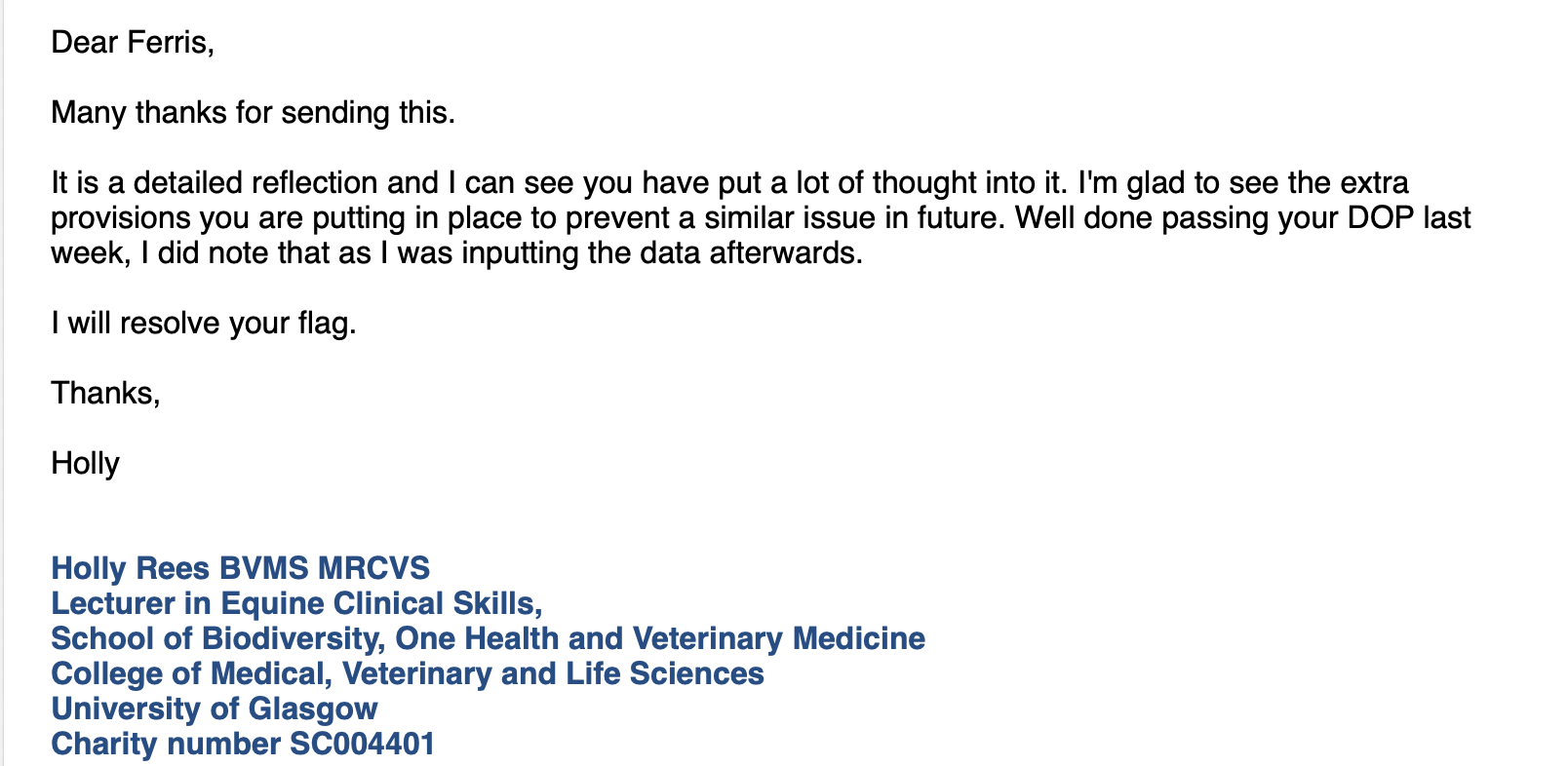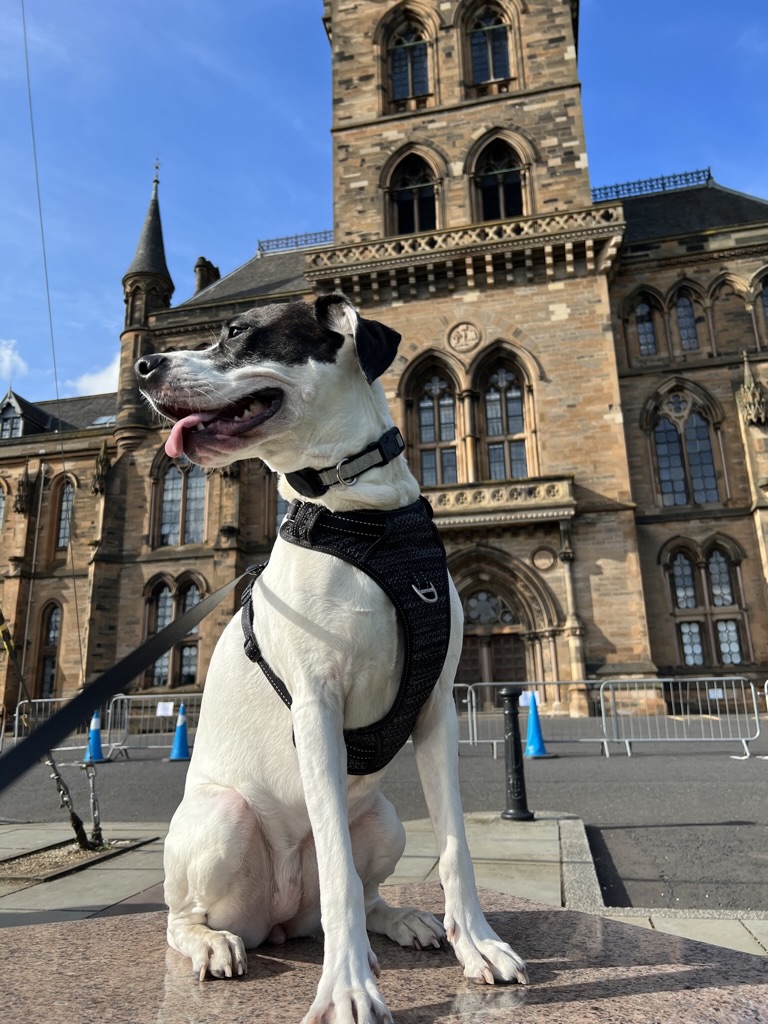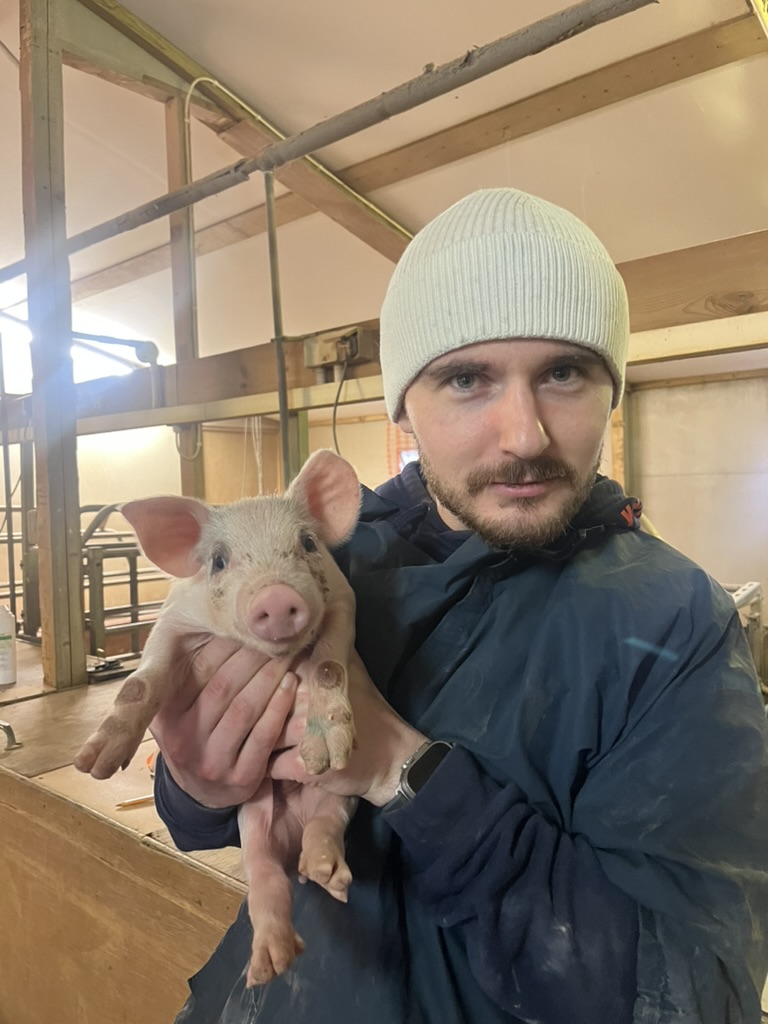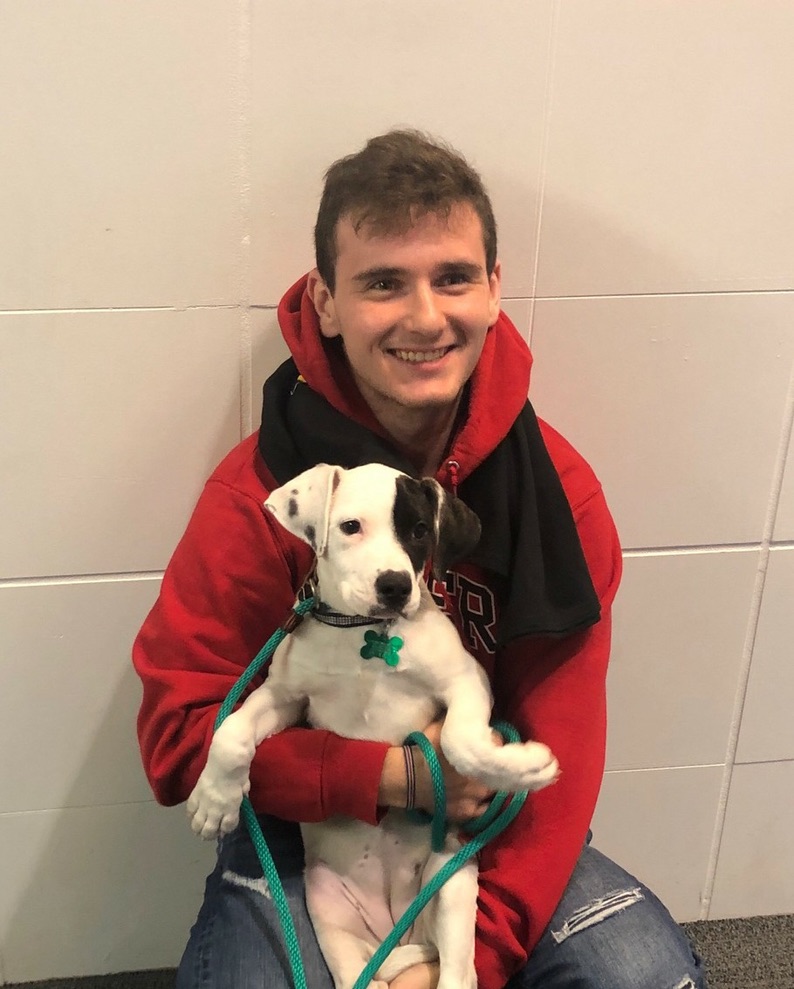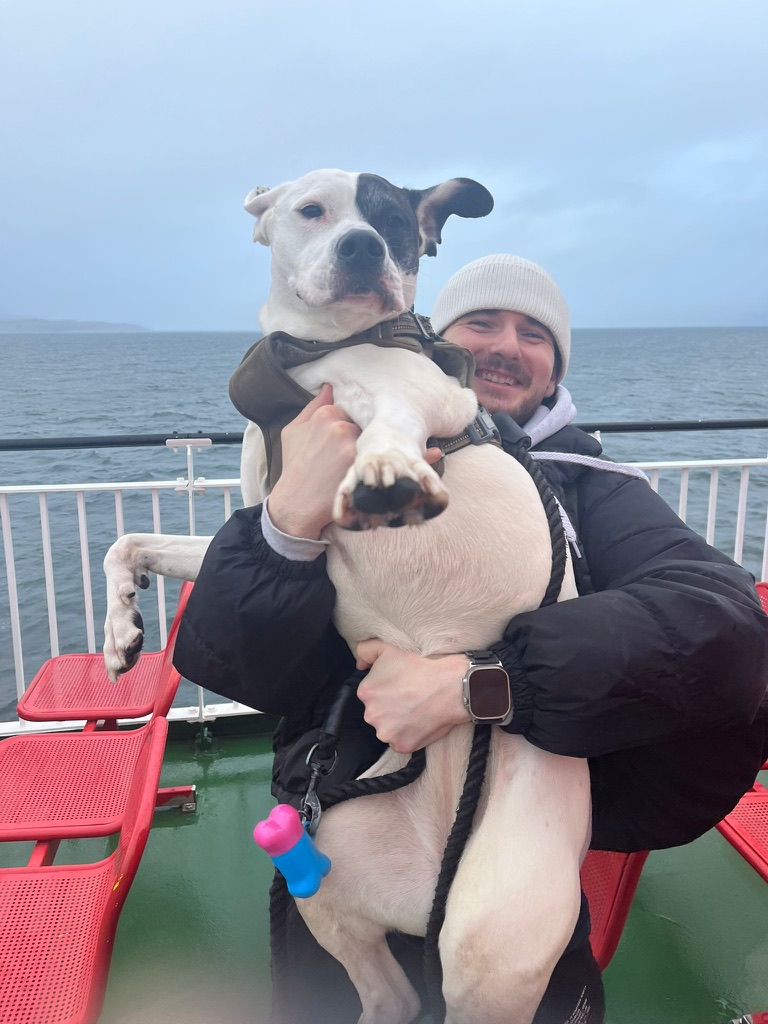About Me
Hello! My name is Ferris Harrison, and I'm originally from Berkeley Heights, NJ, USA. I'm currently a second-year veterinary student at the University of Glasgow. Prior to veterinary school, I earned my undergraduate degree in Biology at Syracuse University and a Master's in Biomedical Sciences at Rutgers University.
Initially, I envisioned a career in human medicine, but adopting my dog shifted my perspective and inspired my path toward veterinary medicine. Before starting my studies in Glasgow, I gained valuable experience working as a veterinary technician and wildlife rehabilitator. These roles deepened my commitment to animal health and welfare.
Now in my second year of veterinary school, I've expanded my clinical and theoretical knowledge through diverse lectures, practical experiences, and EMS. Though my early interests focused primarily on small animal medicine, recent exposure to various specialties has sparked my curiosity in neurology and exotic animal medicine.
Outside academics, I enjoy playing guitar, reading, and exploring Scotland with my dog. This ePortfolio highlights my ongoing growth and experiences in BVMS2 as I progress toward becoming a skilled veterinary professional.
Foundation Phase Outcomes
| Foundation Phase Outcomes | Year 1: Literature Review |
Year 2: Neurolocalization Poster |
Choice: Study App |
EMS 1: Birds of Prey |
EMS 2: Lambing |
Choice 2: Equine DOPS |
|---|---|---|---|---|---|---|
| Foundation Phase Assets | ||||||
| Professional Attitude | ||||||
| Communication | ||||||
| Clinical Skills | ||||||
| Clinical Assessment | ||||||
| Diseases of Body Systems | ||||||
| Investigation | ||||||
| Therapeutics & Management | ||||||
| Data Analysis & Epidemiology | ||||||
| One Health | ||||||
| Health, Safety & Legislation | ||||||
| Veterinary Economics | ||||||
| Research / Evidence Based Veterinary Medicine | ||||||
| Total Outcomes Addressed (11/12) (16) | 2 | 4 | 3 | 2 | 3 | 2 |
Continual Assessment Tasks (CATs) Overview
Module 1 - MCQ Creation |
For Module 1's Critical Assessment Task (CAT), we individually developed review questions on the sympathetic nervous system then uploaded them to Peerwise, a class-shared revision tool. We also provided feedback to refine peers' submissions. As a group, we then created an additional revision resource on the same topic. This CAT task for formative. |
Module 2 - Group Portfolio |
This CAT required us, as a group, to create a Mahara portfolio and reflect on one of our experiences thus far in the course. Again, we found the group work to be enjoyable and created a solid final product. We chose to discuss our experience with the canine handling practical session. This was a valuable experience in navigating Mahara to create future portfolios. This CAT was summative, our group received a grade of B3. |
Module 3 - No CAT |
No CAT was assigned for this module. |
Module 4 - KIQ Review |
For this CAT, our group reviewed our answers to the practice KIQ exam and refined them into our best submission as a unit. I felt this was extremely useful as the initial KIQs were more difficult than expected. Going through each one as a group allowed me to better understand how to prepare for the exam and how these types of questions should be answered. This CAT was formative, so no formal grade was assigned. |
Module 5 - Literature Review |
The CAT for module 5 was an individual assignment. We were tasked with writing a literature review on a given topic. My topic was "Discuss how measuring cortisol can be useful in animal rehabilitation programs." This assignment proved disappointing for me as I submitted a paper that was not up to my standards. Further explanation can be found in my year 1 asset in this portfolio. I received a B2 grade for this assignment. |
Module 6 - No CAT |
No CAT was assigned for this module. |
Module 7 - Limb Dissection & Learning Resource |
For the Module 7 CAT, our group was tasked with dissecting an equine distal limb and creating a revision resource. We specifically focused on the suspensory apparatus. Following the dissection, we created a powerpoint with pictures labels and review questions. Our feedback on dissection and anatomic slides was positive but was critical of our quiz questions, pointing out potential improvements that, in retrospect, should have been obvious. |
Module 8 - Neurolocalization Poster |
For the Module 8 Continual Assessment Task, we were asked to interpret clinical and video-based information to achieve accurate neuro-localization for an acute hindlimb paralysis case in a five-year-old Border Collie. The assignment required creating a comprehensive academic poster detailing clinical findings, rationale for neurolocalization, and appropriate diagnostic and management plans. Unfortunately, as this began, I had an unexpected family matter to attend to and was unable to participate with my group. Fortunately, I was able to make this up individually. I received an 18/20 for this assignment. |
Module 9 - No CAT |
No CAT was assigned for this module. |
Module 10 - KIQ Review |
For Module 10's CAT task, our group reviewed a KIQ paper and a PSQ paper. We worked collaboratively, discussing each question and submitting our most cohesive responses. We scored 22 out of 30 for the KIQ and 9.5 out of 10 on the PSQ. |
Module 11 - Literature Review |
This CAT task required me to critically evaluate a peer-reviewed research paper, demonstrating independent study skills, evidence-based critical appraisal, and effective written communication. I completed structured questions to analyze study design, potential biases, and the strength of evidence presented. I was disappointed with my submission for this, only receiving a 16/30. |
Module 12 - No CAT |
No CAT was assigned for this module. |
Summary of Changes from BVMS1 Portfolio
Building upon the foundational work presented in the BVMS1 portfolio, this collection showcases development during BVMS2. Key enhancements and additions to the portfolio content and structure include:
-
Added New BVMS2 AssetsIncluded five primary assets reflecting BVMS2 experiences: Neurolocalization Poster, Veterinary Study App, Birds of Prey EMS, Lambing EMS, and the Equine DOPS Retake, expanding the scope of evidence beyond BVMS1 coursework.
-
Updated Year 1 Asset ReflectionRevisited the Year 1 Literature Review reflection, analyzing time management challenges and feedback impact, demonstrating growth in self-assessment since the initial BVMS1 submission. (Aligned with feedback/personal development).
-
Developed Custom Portfolio WebsiteCreated this custom website using HTML, CSS, and JavaScript to present portfolio evidence dynamically, improve navigation, and develop web skills alongside veterinary studies.
Overall, this supplementary portfolio aims to provide a more robust and analytically detailed account of my progress, learning, and skill development during the Foundation Phase.
Action Flag Resolution (Equine DOPS)
My Reflection on the Incident
On January 9th, 2025, I failed to attend an equine DOPS slot without proper communication or reason. This is a mistake that I deeply regret. At the time I had been lackadaisical about reintegrating my university email with my devices and had blind faith that my digitally imported calendar would show everything on my schedule. I had previously been informed that my DOPS slot would be sometime in January thus I should have been more proactive about finding specific dates. This experience showed me several faults in my academic modus operandi that have since been corrected. Thankfully, I passed my equine DOPS the following week, making this (at least personally) a potential learning experience. That said, it is obvious that my actions negatively affected several others involved.
My unexplained absence caused an unnecessary disruption to all involved with the equine DOPS that day. For the animals, it resulted in unnecessary handling and a prolonged working day. Both of these would aggregate into extra stress, something especially detrimental given the species. The proctors were faced with an unavoidable period of wasted time that given the weight of their schedules, must have been extraordinarily frustrating. Finally, my slot could have been used for other students who at the time were more responsibly prepared and eager to get the opportunity that I squandered.
Since I realized my mistake, I have adjusted my routine, with the intention of ensuring that this error is not repeated. I no longer rely on integrating my university systems with my native applications. I now frequently check my email directly. Additionally, I now write all compulsory university activities in a physical calendar which sits on my desk. I do genuinely feel horrible about the repercussions to others caused by my irresponsibility, and it is something I intend to never let happen again.
Supporting Evidence (Emails)
Action Flag Notification
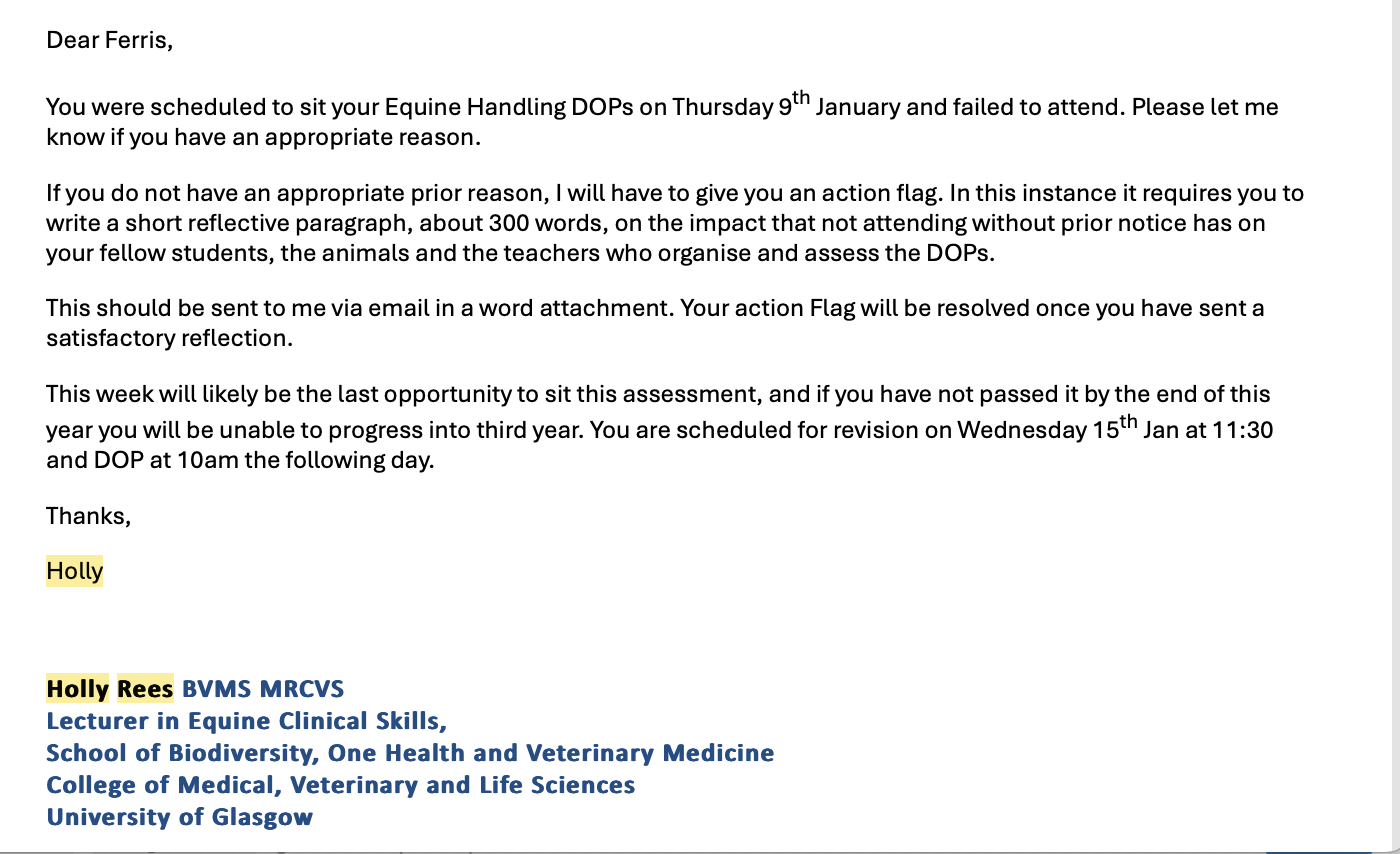
Flag Resolution Confirmation
